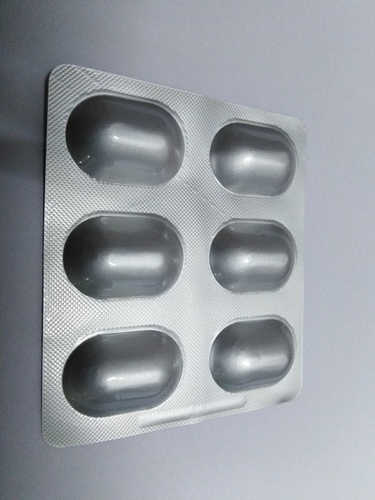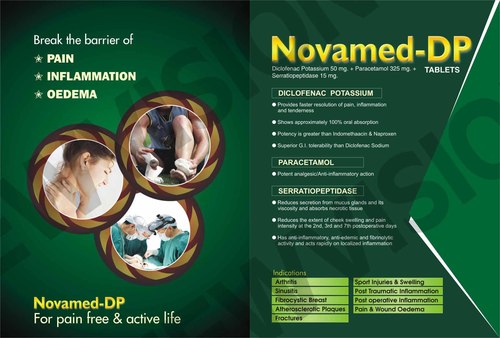
Ibandronic acid 150
Product Details:
Ibandronic acid 150 Price And Quantity
- 335 INR
- 1.00 - 1.00 INR
- 500 Box
Ibandronic acid 150 Trade Information
- Cash Against Delivery (CAD)
- AS PER MARKET DEMAND Per Day
- 1*1,1*3,1*6
- All India
Product Description
(ibandronate sodium) Tablet
Description
ibandronate sodium is a nitrogen-containing bisphosphonate that inhibits osteoclast-mediated bone resorption. The chemical name for ibandronate sodium is 3-(N-methyl-N-pentyl) amino-1-hydroxypropane-1,1diphosphonic acid, monosodium salt, monohydrate with the molecular formula C9H22NO7P2NH2O and a molecular weight of 359.24. Ibandronate sodium is a white-to off-white powder. It is freely soluble in water and practically insoluble in organic solvents. Ibandronate sodium has the following structural formula:
ibandronate sodium is available as a white, oblong, 150 mg film-coated tablet for once-monthly oral administration. One 150 mg film-coated tablet contains 168.75 mg ibandronate monosodium monohydrate, equivalent to 150 mg free acid. Ibandronic acid also contains the following inactive ingredients: lactose monohydrate, povidone, microcrystalline cellulose, crospovidone, purified stearic acid, colloidal silicon dioxide, and purified water. The tablet film coating contains hypromellose, titanium dioxide, talc, polyethylene glycol 6000, and purified water.
Indications
Treatment And Prevention Of Postmenopausal Osteoporosis
Ibandronic acid 150 is indicated for the treatment and prevention of osteoporosis in postmenopausal women. Ibandronic acid 150 increases bone mineral density (BMD) and reduces the incidence of vertebral fractures.
Important Limitations Of Use
The optimal duration of use has not been determined. The safety and effectiveness of Ibandronic acid 150 for the treatment of osteoporosis are based on clinical data of three years duration. All patients on bisphosphonatetherapy should have the need for continued therapy re-evaluated on a periodic basis. Patients at low-risk for fracture should be considered for drug discontinuation after 3 to 5 years of use. Patients who discontinue therapy should have their risk for fracture re-evaluated periodically.
Dosage And Administration
Dosage Information
The dose of Ibandronic acid 150 tablet is taken once monthly on the same date each month.
Important Administration Instructions
Instruct Patients to do the following:
Take Ibandronic acid 150 at least 60 minutes before the first food or drink (other than water) of the day or before taking any oral medication or supplementation, including calcium, antacids, or vitamins to maximize absorption and clinical benefit, (see DRUG INTERACTIONS). Avoid the use of water with supplements including mineral water because they may have a higher concentration of calcium.
Swallow Ibandronic acid 150 tablets whole with a full glass of plain water (6 to 8 oz) while standing or sitting in an upright position to reduce the potential for esophageal irritation. Avoid lying down for 60 minutes after taking Ibandronic acid 150 (see WARNINGS AND PRECAUTIONS). Do not chew or suck the tablet because of a potential for oropharyngeal ulceration.
Do not eat, drink anything except plain water, or take other medications for at least 60 minutes after taking Ibandronic acid 150 .
Recommendations For Calcium And Vitamin D Supplementation
Instruct patients to take supplemental calcium and vitamin D if their dietary intake is inadequate. Avoid the use of calcium supplements within 60 minutes of Ibandronic acid 150 administration because co-administration of Ibandronic acid 150 and calcium may interfere with the absorption of ibandronate sodium (see Drug Interactions).
Administration Instructions For Missed Once-Monthly Doses
If the once-monthly dose is missed, instruct patients to do the following:
If the next scheduled Ibandronic acid day is more than 7 days away, take one Ibandronic acid 150 tablet in the morning following the date that it is remembered.
If the next scheduled Ibandronic acid day is only 1 to 7 days away, wait until the subsequent months scheduled Ibandronic acid day to take their tablet.
For subsequent monthly doses for both of the above scenarios, instruct patients to return to their original schedule by taking one Ibandronic acid 150 tablet every month on their previous chosen day.
Side Effects
Clinical Trials Experience
Because clinical trials are conducted under widely varying conditions, adverse reaction rates observed in the clinical trials of a drug cannot be directly compared to rates in the clinical trials of another drug and may not reflect the rates observed in practice.
Treatment And Prevention Of Postmenopausal Osteoporosis
Daily Dosing
The safety of Ibandronic acid 2.5 mg once daily in the treatment and prevention of postmenopausal osteoporosis was assessed in 3577 patients aged 41 82 years. The duration of the trials was 2 to 3 years, with 1134 patients exposed to placebo and 1140 exposed to Ibandronic acid 2.5 mg. Patients with pre-existing gastrointestinal disease and concomitant use of non-steroidal anti-inflammatory drugs, proton pump inhibitors and H2 antagonists were included in these clinical trials. All patients received 500 mg calcium plus 400 international units vitamin D supplementation daily.
The incidence of all-cause mortality was 1% in the placebo group and 1.2% in the Ibandronic acid 2.5 mg daily group. The incidence of serious adverse reactions was 20% in the placebo group and 23% in theIbandronic acid 2.5 mg daily group. The percentage of patients who withdrew from treatment due to adverse reactions was approximately 17% in both the Ibandronic acid 2.5 mg daily group and the placebo group. Table 1 lists adverse reactions from the treatment and prevention studies reported in greater than or equal to 2% of patients and more frequently in patients treated daily with Ibandronic acid than patients treated with placebo.
Table 1 Adverse Reactions Occurring at an Incidence Greater Than or Equal to 2% and in More Patients Treated with Ibandronic acid Than in Patients Treated with Placebo Daily in the Osteoporosis Treatment and Prevention Studies
Gastrointestinal Adverse Reactions
The incidence of selected gastrointestinal adverse reactions in the placebo and Ibandronic acid 2.5 mg daily groups were: dyspepsia (10% vs. 12%), diarrhea (5% vs. 7%), and abdominal pain (5% vs. 6%).
Musculoskeletal Adverse Reactions
The incidence of selected musculoskeletal adverse reactions in the placebo and Ibandronic acid 2.5 mg daily groups were: back pain (12% vs. 14%), arthralgia (14% vs. 14%) and myalgia (5% vs. 6%).
Ocular Adverse Events
Reports in the medical literature indicate that bisphosphonates may be associated with ocular inflammation such as iritis and scleritis. In some cases, these events did not resolve until the bisphosphonate was discontinued. There were no reports of ocular inflammation in studies with Ibandronic acid 2.5 mg daily.
Monthly Dosing
The safety of Ibandronic acid 150 once monthly in the treatment of postmenopausal osteoporosis was assessed in a two year trial which enrolled 1583 patients aged 54 81 years, with 395 patients exposed to Ibandronic acid 2.5 mg daily and 396 exposed to Ibandronic acid 150 monthly. Patients with active or significant pre-existing gastrointestinal disease were excluded from this trial. Patients with dyspepsia or concomitant use of non-steroidal anti-inflammatory drugs, proton pump inhibitors and H2 antagonists were included in this study. All patients received 500 mg calcium plus 400 international units vitamin D supplementation daily.
After one year, the incidence of all-cause mortality was 0.3% in both the Ibandronic acid 2.5 mg daily group and the Ibandronic acid 150 mg monthly group. The incidence of serious adverse events was 5% in the Ibandronic acid 2.5 mg daily group and 7% in the Ibandronic acid 150 mg monthly group. The percentage of patients who withdrew from treatment due to adverse events was 9% in the Ibandronic acid 2.5 mg daily group and 8% in the Ibandronic acid150 mg monthly group. Table 2 lists the adverse events reported in greater than or equal to 2% of patients.
Table 2 Adverse Events with an Incidence of at Least 2% in Patients Treated withIbandronic acid 2.5 mg Daily or 150 mg Once-Monthly for Treatment of Postmenopausal Osteoporosis
The most common side effects of Ibandronic acid are:
- Back pain
- Heartburn
- Stomach area (abdominal) pain
- Pain in your arms and legs
- Diarrhea
- Headache
- Muscle pain
- Flu-like symptoms
Overdose
No specific information is available on the treatment of overdosage of Ibandronic acid . However, based on knowledge of this class of compounds, oral overdosage may result in hypocalcemia, hypophosphatemia, and upper gastrointestinal adverse events, such as upset stomach, dyspepsia, esophagitis, gastritis, or ulcer. Milk or antacids should be given to bind Ibandronic acid . Due to the risk of esophageal irritation, vomiting should not be induced, and the patient should remain fully upright. Dialysis would not be beneficial.
Other Products in 'Pharma Tablets' category
 |
MEDILON HEALTHCARE
All Rights Reserved.(Terms of Use) Developed and Managed by Infocom Network Private Limited. |

 Send Inquiry
Send Inquiry


